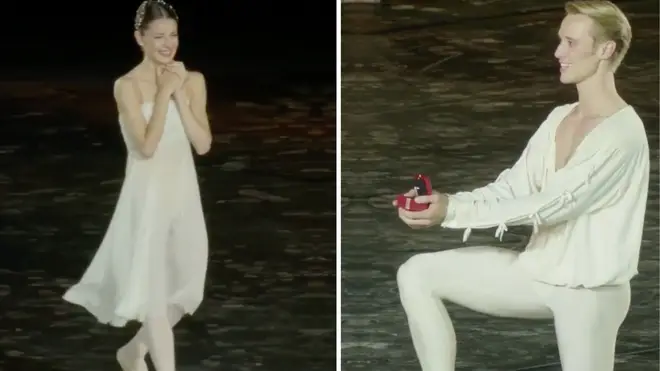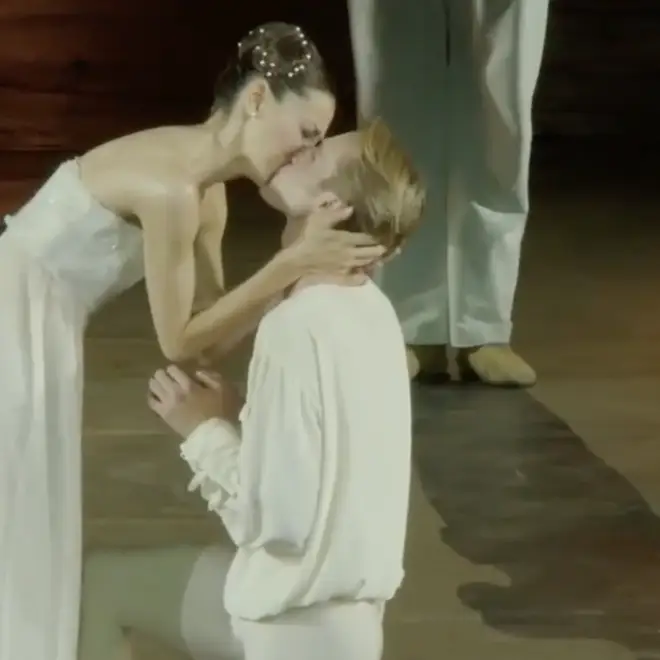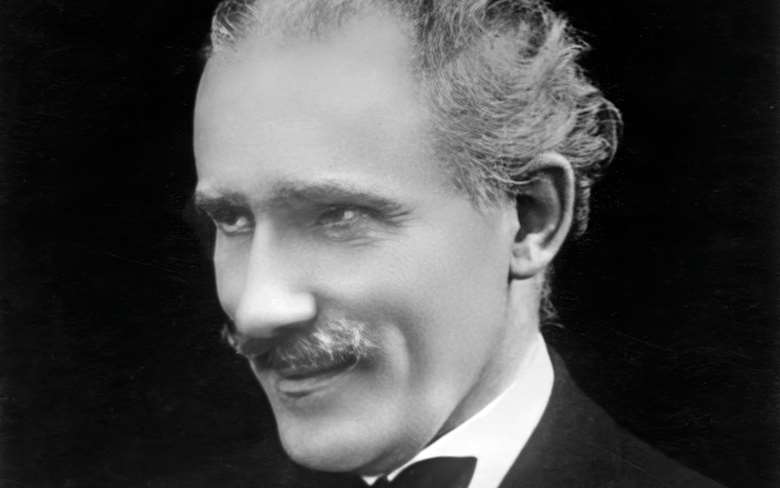Arturo Toscanini was born 10 years before the invention of the phonograph yet remains a living presence because of it, a life force from a vanished age whose work refuses to date.
His first recordings were pre-electric, made with players from La Scala, Milan, on tour in the United States in 1920; his last, completed in New York in 1954 at the age of 87, was an account of Verdi’s Un ballo in maschera that remains the most elemental and erotically charged of all accounts of the piece. ‘I think that Toscanini’s small orchestra is the most effective of all on the gramophone,’ said Compton Mackenzie of that 1920 recording of the finale of Beethoven’s Fifth Symphony, writing in the inaugural issue of The Gramophone in April 1923.
Toscanini possessed two qualities that were invaluable for recording: first, the purity and beauty of sound any Toscanini-trained orchestra presented to the microphones; secondly, a conducting style, shorn of all mannerism, that bore repeated hearing. To which, writing in November 1926, Mackenzie added a third: the electric charge of the conducting. What might seem vivid in the concert hall doesn’t necessarily make a comparable impact on record; and where recorded impact was concerned, Mackenzie suggested, Toscanini was ‘supreme’.
It was principally through the gramophone that Toscanini became the most venerated conductor of his age – ‘iconic’, as latter-day usage would have it. As to the actual iconography, that, too, made an early appearance in The Gramophone in January 1930 in the form of a caricature in the Italian Futurist style by Fernando Autori. It was the image chosen to accompany the publication’s first full-length profile of Toscanini, written not by the editor but by his wife, the pianist, writer and all-round woman of culture Faith Compton Mackenzie. It’s a most revealing piece, not least because of the insights it gives into Toscanini’s relations with the four composers with whom he was most closely associated: Verdi and Puccini, both of whom he worked with and knew, and the two giants of 19th-century German music, Beethoven and Wagner.
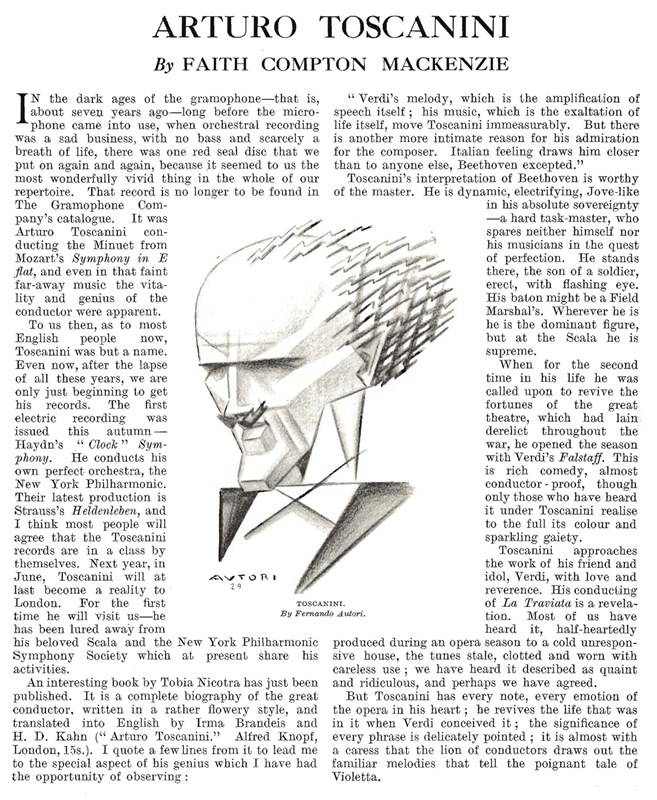
The profile of Toscanini from the January 1930 issue of Gramophone by Faith Compton Mackenzie
Virtually unknown outside Italy and the United States, even as late as 1930, Toscanini had long been a household name to the Mackenzies, partly owing to Faith’s extended residence on the Italian island of Capri in the 1910s and her intimate relationship with Renata Borgatti, the piano-playing daughter of revered tenor Giuseppe Borgatti – Toscanini’s Siegfried and Tristan in groundbreaking Wagner performances in turn-of-the-century Italy.
Not the least of Toscanini’s achievements was the skill with which he grafted Austro-German music onto Latin rootstock, and vice versa. This was heard to particular effect in his conducting of the Beethoven symphonies, of which Mrs Mackenzie gives an eloquent report. His reputation as a Wagner conductor, however, stretched back further, to a performance of Tristan und Isolde which the composer’s son, Siegfried, heard in Turin in 1901.
This was an era, it’s worth remembering, in which Wagner could do no wrong and most Italian opera – all but a handful of acknowledged masterpieces – was treated as little more than cheap entertainment. Mrs Mackenzie cites La traviata, whose tunes had become ‘stale, clotted and worn with careless use; we have heard it described as quaint and ridiculous, and perhaps we have agreed.’ But with Toscanini in charge, ‘It is almost with a caress that the lion of conductors draws out the familiar melodies that tell the poignant tale of Violetta.’
Toscanini’s first appearance on the cover of The Gramophone was in May 1942, shared with his son-in-law Vladimir Horowitz at the time of the release of their famous recording of Tchaikovsky’s First Piano Concerto.
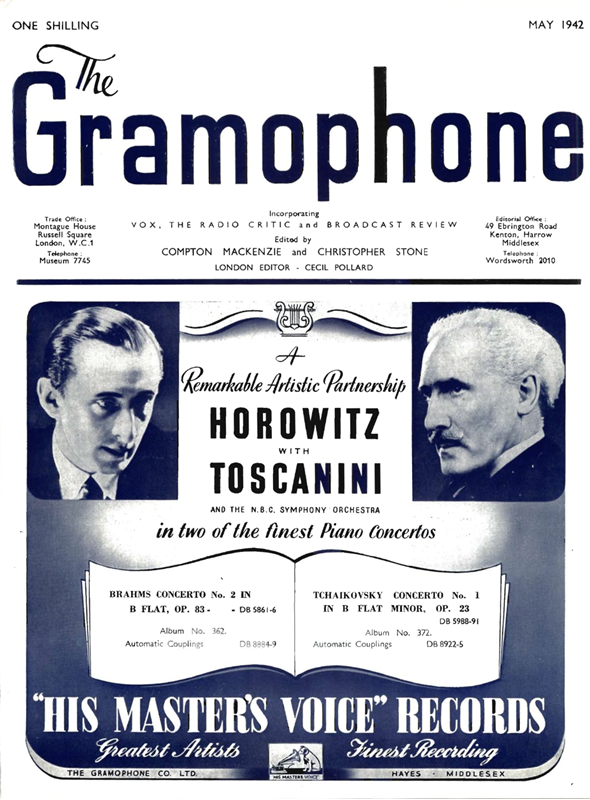
His first solo cover, in June 1949, was linked to his recording of extracts from Berlioz’s Roméo et Juliette. Inside that edition, the disc was subject to a blistering attack, not on Toscanini’s conducting, but on the NBC recording. The review was by the first of a new breed of Gramophone reviewers drawn from the higher echelons of the BBC music department, the 34-year-old Lionel Salter, who clearly knew what he was talking about.
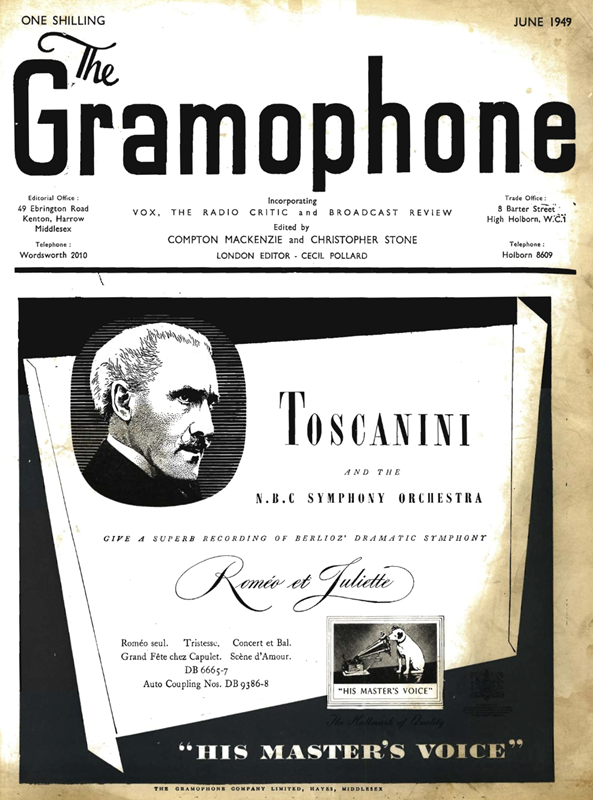
Toscanini liked the restricted ambience of NBC’s Studio 8H, given that he could hear everything from the rostrum. What was problematic was not so much the studio or its equipment (16- and 17-inch wide-groove acetate discs revolving at 33/3rpm) but erratic microphone placements and the often poor quality of the commercial transfers.
One of the great ‘ifs’ regarding Toscanini’s legacy is what might have happened had the rise of Fascism and the Second World War not intervened, tying him to the United States, an American radio orchestra and radio station production values.
In a fascinating reminiscence by John Amis, ‘Legge on Toscanini’, published in Gramophone in June 1990, we learn that EMI’s Walter Legge had the temerity to tell Toscanini that the tempos in his 1946 broadcast recording of La traviata were mostly too fast. Toscanini asked why he thought this, but later conceded that he’d lacked a suitable producer at NBC – someone who would dare advise him, as we know Legge advised Sir Thomas Beecham, Victor de Sabata, Herbert von Karajan and other stellar talents with whom he worked and frequently did battle. Not that the American-made recordings obscure the essential nature of Toscanini’s genius. Mackenzie spoke of Toscanini’s ‘impact’ on record, much as philosopher Sir Isaiah Berlin, who heard him regularly in London and Salzburg in the 1930s, spoke of ‘the intensity, the seriousness, the sublime terribilità’ of his conducting. ‘One left the concert hall or opera house’, he told me, ‘convinced that this, and only this, was the truth.’
Poet, polymath and part-time music critic Ezra Pound – a familiar of the Mackenzies and a good friend of Renata Borgatti – defined another aspect of Toscanini’s craft as his ability to sustain the cumulative effect of an exact rhythm more perfectly, and over a longer period, than ‘temperamental and moody performers’ thought of attempting. (Go to Toscanini’s superb 1953 recording of Berlioz’s allegedly loosely written Harold in Italy to get a sense of what Pound was driving at.)
The words ‘temperamental’ and ‘moody’ may have been aimed at Serge Koussevitzky or, more generally, Wilhelm Furtwängler. If the latter, it was a perpetuation of one of performing history’s most futile jousts. Writing in 1939, Neville Cardus described Toscanini’s Beethoven as ‘the most musically comprehensive of our time, if not the most poetically comprehensive’. The fact is, we needed Toscanini’s Beethoven and Furtwängler’s. If Toscanini was peerless in the Seventh Symphony and Furtwängler in the Eroica, in the Ninth both were needed, according to one’s mood or inclination.
Toscanini was a classicist at heart, with a classicist’s love of light, logic, orderliness and physical beauty. It’s an approach that didn’t cover all eventualities, but it served. ‘He has soul, poetry, flexibility, dash, refinement, dramatic instinct,’ wrote Puccini in 1922. ‘In short, a real miracle.’
